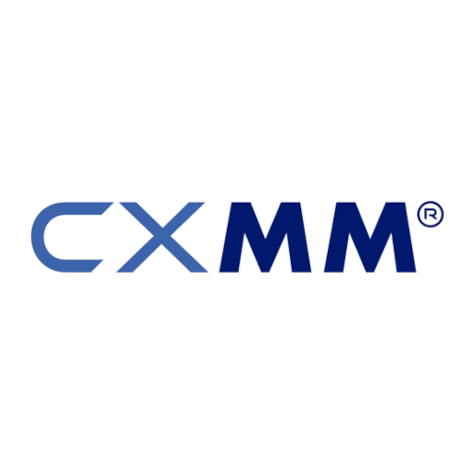The CXMM (Customer Experience Management Methodology) ® service is an outsourced customer survey analysis service to achieve customer-oriented business operations and CX strategies. This service covers all operations relating to customer survey analysis.
Overview
-
NRI has been researching customer loyalty indicators for many years and has come to the conclusion that there are issues and insufficiencies in the use of NPS® (Note 1) as a customer loyalty indicator by Japanese financial institutions (Note 2). Therefore, NRI and Professor Ichijo of Hitotsubashi University jointly developed CXMM® as a customer loyalty indicator for Japanese financial institutions.
The CXMM® Service provides overall customer survey analysis services using CXMM® to support financial institutions in their customer-oriented business operations and CX strategies. -

CXMM® has been implemented by more than 20 financial institutions. In 2021, CXMM® was chosen by Rating and Investment Information, Inc. for their survey to evaluate how customer-oriented each mutual fund company is (Note 3).
Clients
More than 20 companies including Japanese financial institutions, securities firms, and banks
Features
* received a US patent on January 8th, 2024 [Click here to read more.]
Noise mitigation
-
By combining three indicators that mutually mitigate and offset the
noise* that undermines the reliability of customer loyalty
measurement results, we have developed and adopted a “CX
indicator” that consistently produces stable results.
*Noise refers to the “human mindset” that prevents the measurement of customer loyalty for reasons not directly related to customer loyalty.
Strong correlation with business performance
- This “CX indicator” has been proven to have a strong correlation with the earnings of domestic financial institutions, as demonstrated by the financial institutions that have adopted the CXMM®.
Identification of areas for improvement
- We use the expectation disconfirmation model to understand the difference between evaluations and expectations for the various values that a company provides to its customers, and conduct correlation analysis with the CX indicator to quantitatively analyze issues that should be prioritized.
Functions
We undertake all tasks required for customer survey analysis.
Survey design
- Designing CXMM® compliant surveys
Mailed survey preparation and execution
Online survey preparation and execution
Survey results cleansing & feedback
- Cleansing of survey results data (handling exceptions such as multiple selections, cases when responses were made in duplicate through mail and online, etc.)
- Linking raw data of survey results
Cross-analytical data cleansing & integration
- Cleansing of survey results and data to be cross-analyzed (exceptions made, such as exclusion of data not covered)
- Integration of survey results and cross-analysis data
Data analysis
- Analysis of survey results and cross-analysis data
-
Comparative analysis with NRI’s own CX benchmark survey
Reporting
- Preparation of materials to report analysis results
Follow-up
Sending gratuities to participants
Optional Services
- Preparation for implementation of external monitoring
- Implementation of external monitoring; collection
- External monitor rewards support
(Note 1) NPS® (Net Promoter Score: Net recommended persons ratio)
is an index developed by
Bain
& Company to measure customer loyalty. Respondents are asked
to respond to the question, “How likely would you be to
recommend X to a close friend or colleague?”, on an 11-point
scale from 10 (very likely) to 0 (very unlikely), respondents who
answer 10 or 9 are called “promoters,” those who answer 8
or 7 are called “neutrals,” and those who answer 6 or less
are called “critics.” The value obtained by subtracting
the ratio of critics from the ratio of promoters is called the
NPS® (Net Promoter Score: the ratio of net promoters).
(Note 2) NPS® issues
1. High percentage of noise (approx. 80% of respondents)
Since approximately 80% of all respondents believe that
“financial institutions are not something I would recommend to
others,” the NPS® , which asks respondents to rate their
likelihood of recommending a financial institution to others on an
11-point scale, would result in 80% noise.
2. Tendency not to correlate strongly with business performance
Due in part to the way the NPS® questions are asked and due to
noise, they tend not to correlate strongly with performance indicators
such as deposit balances, fee income, and gross profit.
3. Difficulty to identify areas for improvement
Since 80% of the responses are noise, there is little information for
identifying areas for improvement.
(Note 3) Notice: “Nomura Research Institute’s proprietary
CX indicator is used in the “Customer-Oriented Evaluation of
Investment Trust Dealers”.
https://www.nri.com/jp/news/info/cc/lst/2021/0902_1
(Japanese)
*CXMM® is registered trademarks of Nomura Research Institute, Ltd.
in Japan.
*Unauthorized reproduction or copying of any of the contents of these
documents is prohibited.
*The contents of this page are current as of
April 2025
. The specifications and prices of products and services are subject
to change without notice. Offers and sales of these products and
services are subject to cancellation without notice.